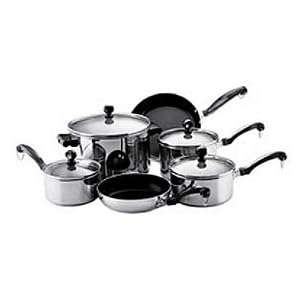BakingAshley
Assistant Cook
- Joined
- Oct 23, 2010
- Messages
- 3
Hi Everyone
My name is Ashley and I am a final year student at Loughborough University studying Product Design. I am a keen cook and baker and I am very excited about having the opportunity to focus my final year design project around cooking in the home. I am hoping that you guys could spare a minute to help me out with some research that I am currently undertaking.
I am looking at designing a product, most likely a saucepan, which will help to support the transition that many people have to make from living at home and having meals prepared for them to leaving home and having to start cooking for themselves.
If any of you have recently made this transition or know of anyone that has done so i.e. children leaving home, you could be of assistance! I would like to know what problems you have had with using saucepans on the hob for the first time and any other problems you may have encountered i.e. problems ensuring that all of the different elements of the meal are ready to be served up at the same time. Those of you that have not recently made this transition, you could still help out by letting me know any of the problems you still encounter with using saucepans on the hob, I for one still struggle with my water over boiling!
Thank you in advance!
My name is Ashley and I am a final year student at Loughborough University studying Product Design. I am a keen cook and baker and I am very excited about having the opportunity to focus my final year design project around cooking in the home. I am hoping that you guys could spare a minute to help me out with some research that I am currently undertaking.
I am looking at designing a product, most likely a saucepan, which will help to support the transition that many people have to make from living at home and having meals prepared for them to leaving home and having to start cooking for themselves.
If any of you have recently made this transition or know of anyone that has done so i.e. children leaving home, you could be of assistance! I would like to know what problems you have had with using saucepans on the hob for the first time and any other problems you may have encountered i.e. problems ensuring that all of the different elements of the meal are ready to be served up at the same time. Those of you that have not recently made this transition, you could still help out by letting me know any of the problems you still encounter with using saucepans on the hob, I for one still struggle with my water over boiling!
Thank you in advance!

